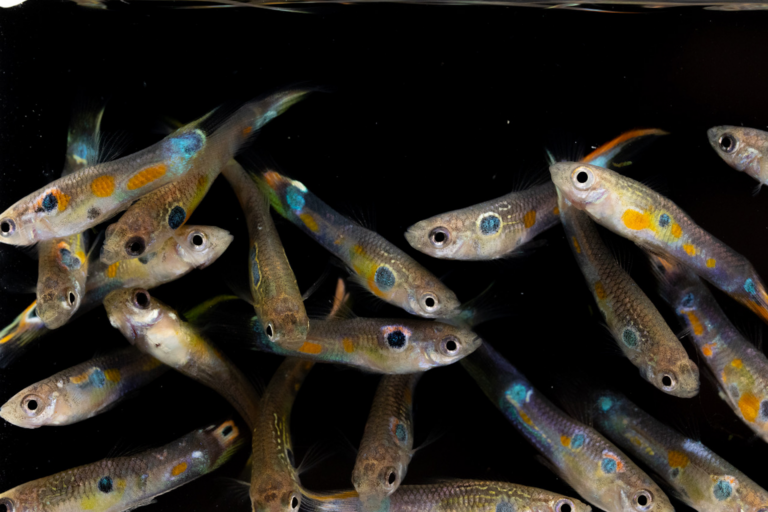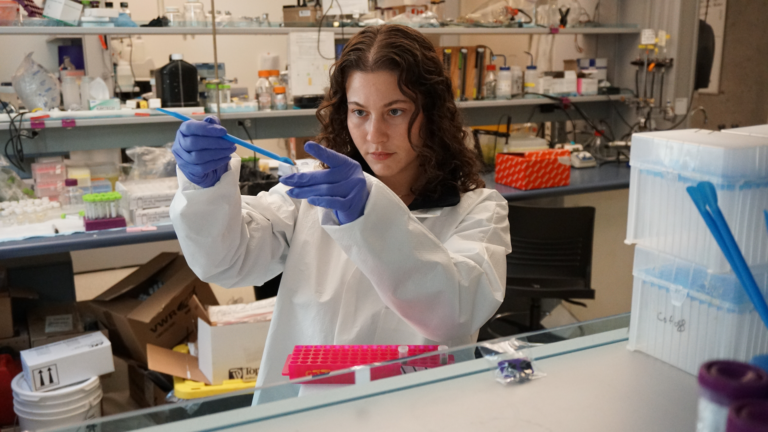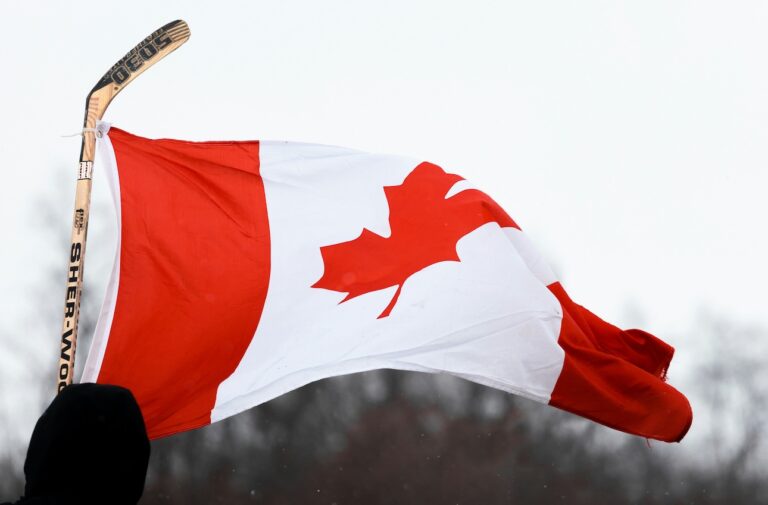How ‘parks for bugs’ boost pollinators in Vancouver
A study found that reducing lawn mowing and creating pollinator meadows significantly boosts pollinator diversity, creating healthier and more resilient ecosystems.
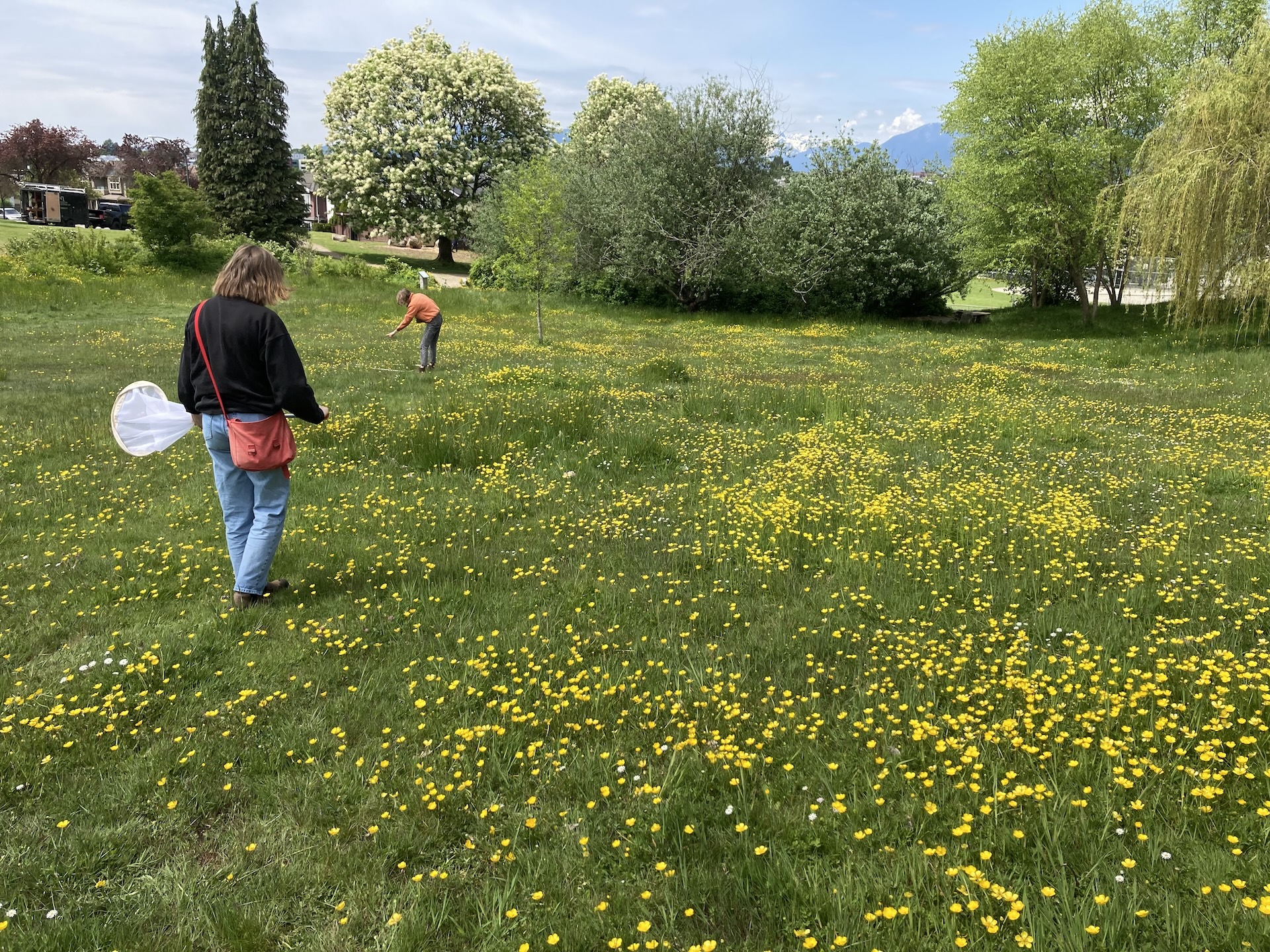
Two undergraduate UBC work learn students help to collect data on flowers and pollinators in a park with a pollinator meadow. Photo credit: Jens Ulrich.
As the days get longer and gardeners plan their spring planting, research from the University of British Columbia offers some good news this Earth Day: small, simple changes to urban green spaces can make a big difference for pollinators. The study, published in Ecology Letters, found that reducing lawn mowing and creating pollinator meadows – think of them as ‘parks for bugs’– significantly boosts pollinator diversity, creating healthier and more resilient ecosystems.
A buzzing success
The three-year study, conducted in collaboration with the City of Vancouver’s pollinator meadows program, surveyed pollinators in 18 urban parks across Vancouver, comparing parks where meadows were planted and mowing was restricted with parks that remained as standard turfgrass lawns.
And while the tall grass caused a small stir among some neighbours, the results were striking: parks with meadows saw an immediate increase in pollinator species, with 21 to 47 more wild bee and hoverfly species compared to parks without meadows. The increase persisted over the three-year study period, suggesting that the meadow parks also support pollinators in the long run.
More than 100 species of wild bees and hoverflies were identified, with 35 of them only found in parks with meadows – including the Vancouver and Nevada bumble bee, some miner bees such as the Milwaukee miner bee, the red-faced miner bee and several species of hoverflies.
“Many people think of urban landscapes as poor environments for biodiversity, but our research shows that small actions can have a lasting impact,” said lead author Jens Ulrich, a PhD candidate in the faculty of land and food systems. “You don’t need a lot of space or resources to make a difference.”
Urban landscapes as pollinator havens
Unlike farmland, where large fields with monocrops can limit pollinator movement, urban areas are full of green spaces—gardens, parks, and even roadside boulevards—that can serve as pollinator refuges. The patchwork of small habitats allows species to move freely and settle into restored areas quickly.
The research highlights the importance of maintaining and expanding such efforts. Ongoing management, such as adding more native plants and controlling invasive species, can further strengthen pollinator communities.
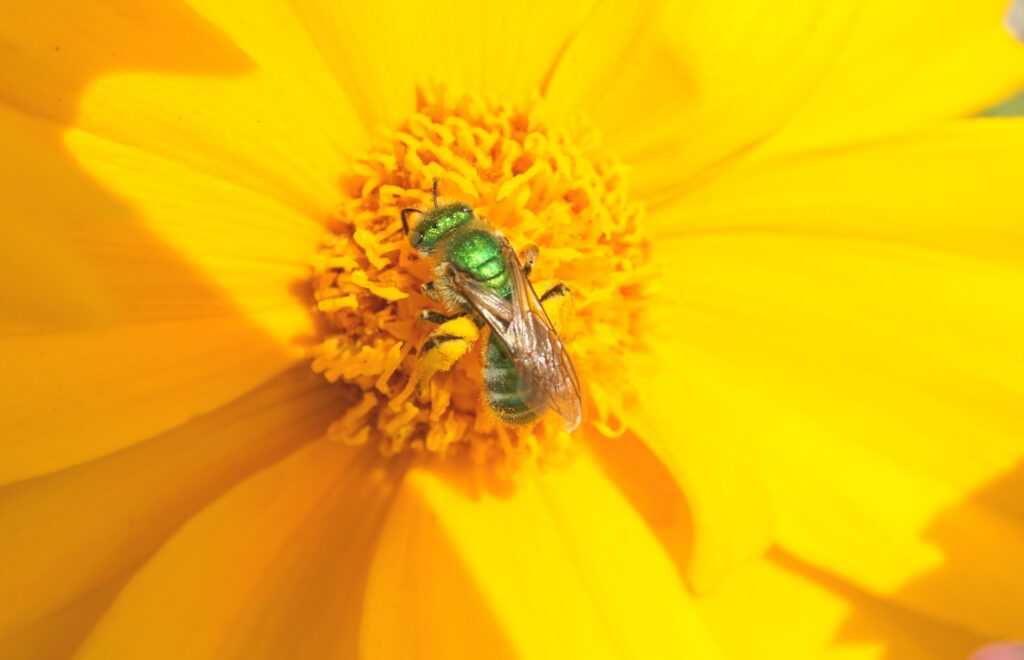
The findings also offer practical guidance for city planners and community groups looking to enhance urban green spaces, and have already informed the City of Vancouver’s long-term planning—helping to establish pollinator meadows as a permanent option for parks and shaping future efforts to balance ecological function with aesthetic and cultural values.
“With so much land dedicated to lawns, there’s a major opportunity to rethink how we use these spaces,” said co-author Dr. Risa Sargent, an associate professor in the faculty of land and food systems. “Even small patches of insect-friendly meadows can provide critical resources for pollinators.”
Whether you have a backyard, balcony, or community garden plot, you can support pollinators with these simple steps:
- Reduce mowing: Pollinators thrive in areas where flowers are allowed to bloom. Consider letting a section of your lawn grow longer or mowing less frequently.
- Plant native flowering shrubs and trees: Perennial species like native chokecherry, Pacific ninebark, oceanspray, native hawthorn, red flowering currant, salal, red-osier dogwood, snowberry and vine maple are great choices for British Columbia’s Lower Mainland.
- Create a diverse habitat: Incorporate a variety of plants that bloom at different times of the year to provide food from spring to fall.
- Avoid pesticides: Many urban areas, including Vancouver, have already restricted pesticide use, but avoiding chemical treatments in your own garden can further protect pollinators.
- Leave natural nesting sites: Many native bees nest in the ground or in plant stems. Keeping some bare soil or leaving flower stalks through winter can provide valuable shelter.
Photos from project: Dropbox
Featured Researcher
Jens Ulrich
Phd Candidate, Faculty of Land and Food Systems

